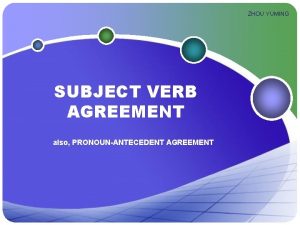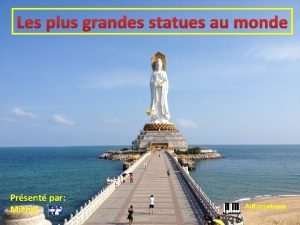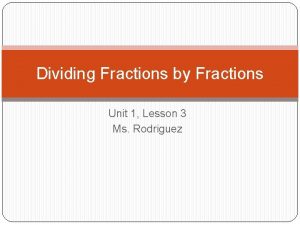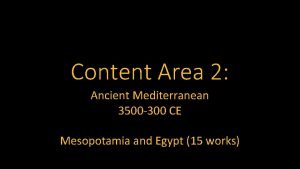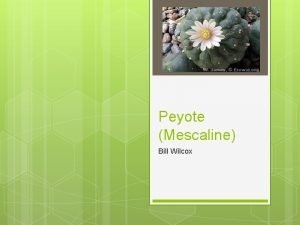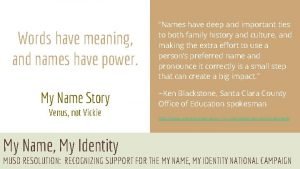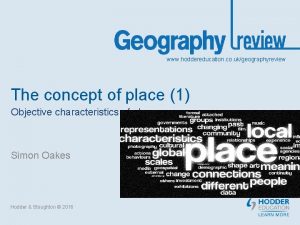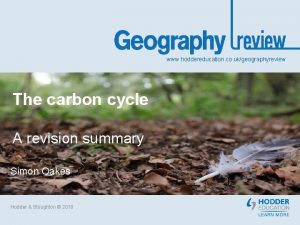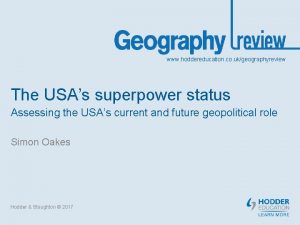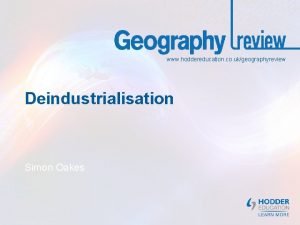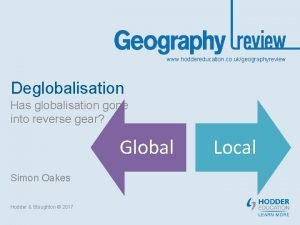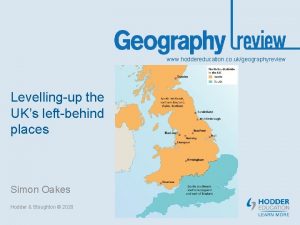www hoddereducation co ukgeographyreview Statues street names and





![Who was Edward Colston? Quote from History of Parliament website ‘From 1680 [Colston] became Who was Edward Colston? Quote from History of Parliament website ‘From 1680 [Colston] became](https://slidetodoc.com/presentation_image_h2/2a64920e224c3115115583624f714ab7/image-6.jpg)







- Slides: 13

www. hoddereducation. co. uk/geographyreview Statues, street names and place representation Simon Oakes Hodder & Stoughton © 2021

Introduction All A-level geography courses include the core topic of Changing Places. As part of this topic, students learn about: • the impact of relationships and connections on people and places • how past and present connections, within and beyond localities, shape places and embed them in the regional, national, international and global scales • the importance of the meanings and representations attached to places by people This presentation explores these ideas using contemporary examples of tension and conflict surrounding historical statues and other representational features found in shared public spaces in the UK.

Statues and place representation • Statues are just one of many ways in which places, societies and their histories are represented. • Landmark statues can make an important contribution to a place’s present-day character. • However, like any other form of artistic imagery, statues of human beings can divide opinion. • Not everyone will agree with the choice of who is memorialised as a statue — and who is not.

Statues and place representation • Are there any statues or other monuments in public spaces in the place where you live? • Which people or events are the statues or monuments meant to commemorate? • Do you agree or disagree that these people or events should be memorialised in this way? Why do you hold this view, and how might it differ from the views of some other people? • Can you identify a suitable person or persons to commemorate in a public space in your home area? How would you justify a proposal to commemorate them in that space?

Conflict over statues • In June 2020, campaigners pulled down a 6 -metre-high bronze statue of slave trader Edward Colston. • The statue was located in Magpie Park in Bristol, where it had stood since 1895. • For many years, the statue divided local opinion. On the one hand, some people view Colston as a generous local hero who paid for schools and churches in Bristol in the late 1600 s. • On the other hand, critics have drawn attention to Colston’s enthusiastic participation in the transatlantic slave trade — the source of his wealth.
![Who was Edward Colston Quote from History of Parliament website From 1680 Colston became Who was Edward Colston? Quote from History of Parliament website ‘From 1680 [Colston] became](https://slidetodoc.com/presentation_image_h2/2a64920e224c3115115583624f714ab7/image-6.jpg)
Who was Edward Colston? Quote from History of Parliament website ‘From 1680 [Colston] became heavily involved in the slave trade, from which he made the bulk of his fortune, and was an active member of the Royal African Company, becoming deputy-governor briefly during 1689– 90 … The 1680 s were undoubtedly his most lucrative years in business, and according to one account he was said to have owned over 40 ships. ’ ‘Edward Colston was a Bristol-born English slave trader, merchant and Member of Parliament. Much of his wealth was acquired through the trade and exploitation of slaves. Yet we celebrate and commemorate him with a statue in our beloved city centre. He has no place there. ’ Quote from an online petition in 2020 (calling for the removal of the statue)

‘Decolonising’ Britain’s statues and public spaces • On 7 June 2020, the statue was pulled off its pedestal in Magpie Park and rolled into Bristol Harbour. • Edward Colston’s statue had long been viewed by some Bristol residents as an avatar of prejudice against black people that ought to be removed from public display. • The final trigger for action was the Black Lives Matter protest movement which spread globally during the summer of 2020.

Place relationships and connections • The pulling down of the Colston statue was not an isolated incident. • Campaign groups staged protests targeting similarly controversial statues in other UK cities, including Liverpool, London, Glasgow and Cardiff, throughout June 2020. • Protest events in the UK and other countries (including Australia, Germany and France) were directly connected with Black Lives Matter protests in the USA triggered by the killing of George Floyd by local police in Minneapolis 2 weeks earlier, on 25 May 2020. • These worldwide protests illustrate how ideas can spread rapidly and widely online within contemporary global systems. • Even though global movements of goods and people were restricted during the Covid-19 pandemic, flows of information accelerated, enabled by platforms like Instagram, Whats. App and Zoom.

Past and present connections • The protests and disturbances in the UK had a pattern. • Campaigns focused on statues in cities which served as global hubs for the British Empire in previous centuries, including the ports of Glasgow, Liverpool, Cardiff, Bristol and London, all of which grew and prospered on account of British Empire trade — including the buying and selling of human beings. • Today, museums in these places shine a light on each city’s colonial past, notably so in Liverpool’s International Slavery Museum.

The trouble with street names • Local street names can be a source of controversy too. • Some are meant to represent the history or values of a local area. • However, not all members of a local community may agree with a particular street name’s ‘message’. • Why might some people object to the following street names? 1. Some recent UK street name changes have an environmental message: Eco Way in Doncaster and Sustainability Way in Leyland. 2. Other street names reflect the commercialisation of places – for example, Costkea Way in Edinburgh (a combination of Ikea and Costco). 3. A road in Leicester has been named after footballer Gary Lineker. Source: www. tinyurl. com/44 frvdrf

The trouble with street names Watford Council recently passed a motion which read: Watford has a rich, diverse and positive history which must be celebrated. One way to celebrate this is to ensure that street names, buildings, statues and monuments reflect our town and that they do not contain any of the negative history which this town abhors. The Black Lives Matter campaign has rightly focused on the serious concerns of symbols of oppression and slavery. The council also notes that there are street names that are named after people who were involved in the slave trade, colonisation and oppression, which does not reflect the forward-thinking, outward-looking Britain and our town. The council notes that it is not tenable to continue to have these existing names for these streets. Source: www. tinyurl. com/43 uyxfpv

Discussion • This presentation has explored some of the issues and challenges which arise when a decision is made to use public spaces to commemorate particular historical events, people or values. • What is the best way to decide who and what is remembered (or not) in the form of statues, street names and other kinds of representation? • Statues are sometimes important because of their association with tourism and place branding strategies. Can you think of any examples?

This resource is part of GEOGRAPHY REVIEW, a magazine written for A-level students by subject experts. To subscribe to the full magazine go to: http: //www. hoddereducation. co. uk/geographyreview Dr Simon Oakes is the editor of the A-level Geography Topic Master series published by Hodder Education. Some of the photographs in this presentation are taken from the Changing Places book in this series. Hodder & Stoughton © 2021
 No news _____ good news.
No news _____ good news. Sodoshima
Sodoshima Nadar raising photography to the height of art
Nadar raising photography to the height of art Diana is painting statues. she has
Diana is painting statues. she has Statues of votive figures
Statues of votive figures Www hoddereducation com
Www hoddereducation com Positive feedback geography
Positive feedback geography Ansoff matrix dyson
Ansoff matrix dyson Www hoddereducation com
Www hoddereducation com Www hoddereducation com
Www hoddereducation com Prozac street name
Prozac street name Mescaline names
Mescaline names Street names for herion
Street names for herion Words have meaning and names have power
Words have meaning and names have power
